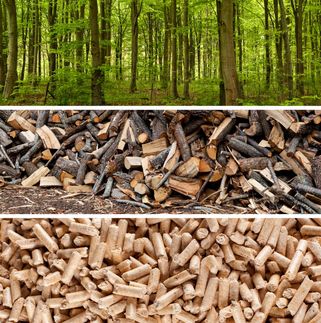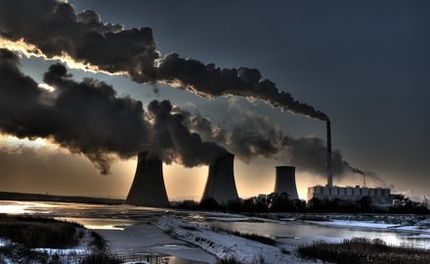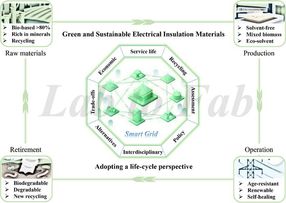Potential for significant defossilisation of the chemical industry using biomass
Study Confirms Biomass Can Meet 20% of Carbon Demand in Chemicals Sector by 2050 without compromising food and feed supply
Advertisement
A new study commissioned by the Renewable carbon Initiative (RCI) and the Biobased Industries Consortium (BIC) reveals that meeting 20% of the total global carbon demand of the chemicals and derived materials sector by 2050 from biomass is achievable and sustainable. This key finding highlights the potential for defossilising the industry, which currently relies on fossil resources for over 90% of its carbon needs.
The chemicals and derived materials industry is heavily dependent on carbon, with more than 90% of this embedded carbon today coming from fossil resources such as oil, natural gas, and coal, which are major contributors to climate change. To achieve climate neutrality by 2050, the embedded carbon in chemicals and materials must be defossilised and replaced with renewable alternatives from biogenic carbon, carbon from CO2, and recycling. Various reports estimate the share of biomass to be around 20%. However, there is scepticism about how much biomass is actually available in addition to food and feed needs.
RCI and BIC commissioned a study to address the core question: Can agricultural and woody biomass together provide enough biomass to sustainably meet 20% of the future carbon demand of the chemical and derived materials industries in 2050, up from 5.5% (EU27) and 10% (global) in 2023? The study was carried out by nova-Institute (DE) in collaboration with EuroCARE Agricultural Policy Research (DE) and the Thünen Institute of Forestry (TI-WF, DE).
To investigate this question in an objective, scientific manner, the study established a baseline of current biomass use and developed different future scenarios to model a range of possible developments. These scenarios consist of one Business-as-usual (BAU), two Green Low Resource Depletion (LRD) and three Green High Technology (HT) scenarios. Together with EuroCare and Ti-WF, the developments of biomass availability were then analysed for these scenarios, both for agriculture and for forestry.
The key result of the study: Yes – meeting 20% of total global carbon demand of the chemicals and derived materials sector in 2050 from biomass is achievable and sustainable. Under the moderate HT scenario, which is the most likely development, the 20% share can be delivered without compromising food and feed supplies and biofuel demand. Providing much more than 20% of carbon demand from biomass would be unreasonable under existing biofuel policies and only a moderately high-tech agricultural system; stronger high-tech scenarios could provide up to 40%.
Agriculture: Across all scenarios, it is expected that agricultural biomass production will grow steadily until 2050. The main driver of this is the additional demand for food and feed, due to population growth from 7.7. to 9.6. billion humans by 2050. Depending on the type of scenario – Business-as-usual (BAU), Green Low Resource Depletion (LRD) or Green High Technology (HT) – growth rates range from 24% to 53%, for BAU the projected increase is 31% or up to 5.07 billion tonnes.
The projected future demand for starch, sugar and vegetable oil – still the dominant feedstocks for the chemical industry in 2050 – can be met in the high-tech scenarios: The additional yield required is around 10% (compared to BAU), so the moderate HT+10 scenario is fully sufficient to meet the demand. Stronger high-tech scenarios in agriculture, e.g. through AI, precision farming, drones or GMO, can even provide enough biomass to significantly exceed the 20% target, up to 40%.
Technological innovation therefore appears to play the most important role in achieving the 20% target. At the same time, the more efficient production and use of biomass in HT scenarios allows more land to be set aside and used for nature restoration.
To increase the share of available biomass, more lignocellulosic feedstocks such as straw, wood and biowaste can be used. However, access to these particular feedstocks faces strong competition from Sustainable Aviation Fuels (SAF) with strong political support through quotas.
The amount of straw available for use could be greatly increased if in addition to wheat, barley, rye and oat straw, also corn and rice straw were tapped into. If these volumes became available, it could turn straw into an important feedstock.
Forestry: Global supply and demand of industrial roundwood (coniferous and non-coniferous) will globally increase by an estimated 38% between 2020 and 2050, from 0.9 to 1.3 billion tons dry matter (t dm) per year. The largest increase in supply is expected in Asia (69%), including China and Russia, but a significant increase of 32% is also seen for Europe. The differences between the scenarios are comparatively minor compared to the agricultural sector.
The additional demand from the chemical and materials industries is comparatively small compared to the fast-growing traditional applications of wood, mainly construction and furniture. This means that, in principle, it is very feasible to meet the chemicals and materials demand in the long-term. There are several options for achieving this: (1) use a relatively small proportion of total industrial roundwood supply (evaluate cost-effectiveness), (2) use of by-products from industrial roundwood processing (problem of high competition), or (3) divert a relatively small proportion from the fuelwood sector.
Taking a holistic view, the additional demand of the chemical industry for biomass to cover 20% of its production by 2050 is comparatively small, even for Europe: The demand for European primary agricultural biomass would require about 8% of the total supply (30 out of 390 million t dm) and approximately 3% of European forestry supply (industrial roundwood, fuelwood and industrial roundwood by-products, 12.6 out of 398 million t dm).




























































